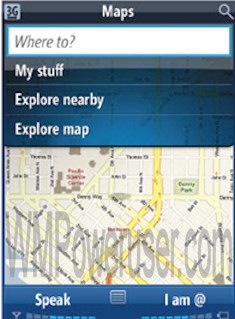From one point of view, Apple, with the Macintosh, won the computing industry. They revolutionised computing in the early 70s with the Apple II and did it again in the 80s with the Macintosh. Nowadays you can’t sell a personal computer that doesn’t, in some way, bear some homage to that tiny, slow, expensive machine. … Continue reading “Wake up, Mac, time to die.”
From one point of view, Apple, with the Macintosh, won the computing industry. They revolutionised computing in the early 70s with the Apple II and did it again in the 80s with the Macintosh. Nowadays you can’t sell a personal computer that doesn’t, in some way, bear some homage to that tiny, slow, expensive machine. Apple turned cursor computing into pointer computing and for the last 25 years we’ve been interacting with computers the same way – inputting data with a keyboard and using a single finger to poke at the virtual world.
In the late 90s I wrote a website which theorised the future of computing and I included the idea that we could have two pointers. We would have new methods of interaction as we could hold objects with one pointer and ‘tear’ objects with the other. I hadn’t considered touchscreens because my HCI year at the University of Ulster told me that touchscreens had lots of issues – not least that your pointing device gets in the way of your display. Who could have known that the success there would be with smaller screens.
MG Siegler of Techcrunch writes:
And it’s potentially even bigger than that. Last week, I argued that the reason everyone is so excited about this tablet is because there is the very real possibility that it will alter the role of computing in our lives just as the iPhone has. Daring Fireball’s John Gruber took that concept further: “I think The Tablet is nothing short of Apple’s reconception of personal computing,” he wrote.
It’s my feeling that on the 26th anniversary of the Macintosh, Apple intends to bring multi-finger computing to everyone, not just those smart enough to already be using an iPod touch, iPhone or new Unibody Mac. The gestures available on a Mac right now are minimal, the screens on iPod and iPhone are too small to effectively use more than two fingers – so something is coming. I can taste it.
One of the most obvious things about the proposed Tablet is that Tablets are not new. They’ve been around for years in many forms and Apple even had their own foray into it in the 90s with the Newton. Tablets have never been terribly successful however and have been limited to semi-lucrative vertical market deals for education and medical. For this reason, some pundits tell us that we don’t need an Apple tablet and if all things were equal, they’d be right.
When Apple released the iPod, there was a lot of choice in the MP3 player market. But no-one seemed to be getting it right. The DRM controls were a nightmare, the storage capacities were tiny (or alternatively the player was immense), the user interfaces were arcane and battery life was rubbish. Pundits stood up to tell us how wrong it was, how it was doomed to failure (just as they had with the iMac, the iBook) and almost a decade later you’d be crazy (or ignorant) to buy any MP3 player other than an iPod.
It’s a dangerous life for a pundit, being expected to support one competitor over another and being influenced by the advertising dollars which flow through your web site. In many cases, I think they delight in being wrong as folk out there are more likely to link them, more likely to comment and therefore more likely provide statistics (nomatter how meaningless) on readership and market penetration.
Pundits have, so far, been completely wrong on the iPhone (it’s still selling well, still growing, still being improved and still better than pretty much anything else out there). And as it grows, people are buying apps and increasing the investment they have in the platform – this becomes an assurance, part of a war chest that Apple will leverage for future products, be they iPod touch, iPhone or new, unannounced products. This war chest, the Halo effect’, will help ensure that the next product you buy has an Apple logo.
So – yes – we’re being played by one of the Silicon Valley computing companies.
Steve Jobs said:
“If I were running Apple, I would milk the Macintosh for all it’s worth — and get busy on the next great thing. The PC wars are over. Done. Microsoft won a long time ago.”
— Fortune, Feb. 19, 1996
Pretty much a year later, he was running Apple. He killed off the old Mac, introduced his own operating system (skinned to look like a Mac) milked the name for a decade, reduced Apple’s reliance on the Mac (with the iPod), introduced a new killer OS platform (a next great thing, iPhone OSX-based) and is about to introduce another OSX-based platform, another next great thing, which will help to cement the company in the future and further reduce the reliance on the Mac which, in it’s essence, is based on a 25-year old interaction metaphor.
Wake up, Mac, time to die.





